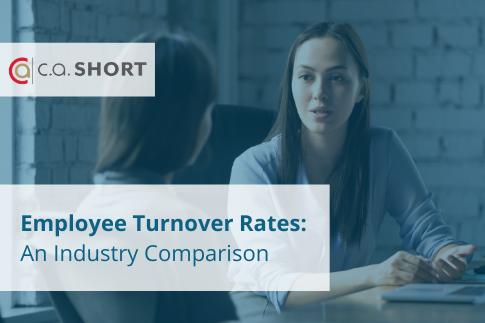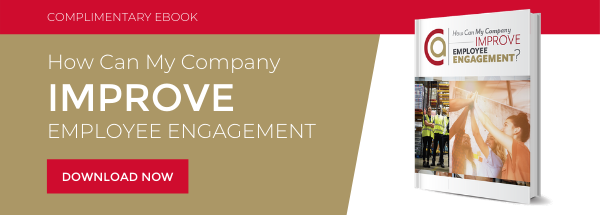Employee turnover happens when an individual leaves their company, and a new person is hired to fill the vacant role. The reasons and costs for the turnover may surprise you.
What Is Employee Turnover?
When an employee leaves an organization and their role requires a replacement, it is referred to as employee turnover. According to a 2019 Gallup article, this fixable problem costs U.S. businesses across multiple industries $1 trillion, which is a conservative figure.
The Balance Careers notes that a certain amount of employee turnover cost is something an employer cannot prevent or avoid. However, if a company experiences too many voluntary employee resignations in a short time span, it can negatively impact the organization. In some cases, it can lead to a company's ruin if the issue persists without remedy. The cost can become insurmountable because employee turnover is expensive. Some studies report that it costs about 150% of an employee's annual salary to launch and implement a full-scale recruitment process.
Top Industries Employee Turnover Rates
Each industry is unique in its staffing needs, approach to hiring, corporate culture, and other factors that can empower them to enjoy strong employee retention or lead them down the costly and time-consuming path of employee turnover. Take a look at four vital industries and their current employee turnover rate numbers to get an idea of where many businesses stand today.
1. Healthcare
Professional turnover is costly and stressful for any organization, but it affects everyone when employees leave healthcare positions. The remaining health professionals have to pitch in to cover shifts until the facility hires a qualified replacement in an already stressful environment. It might not come as a surprise that turnover rates in healthcare stand at 30% higher than in other industries. When health organizations implement employee engagement and recognition programs, they can experience a 24% – 59% decrease in turnover.
2. Energy and Utilities
As more and more Baby Boomers reach retirement age, turnover rates are cited as one of the biggest concerns in the energy and utility industry, anticipating losing up to 50% of its workforce over the next decade.
3. Transportation and Fleet Management
The transportation industry, similar to healthcare, feels the effects of employee turnover at the ground level. With more people depending on shipping and supply chain every day, transportation and fleet managers need to create a strong employee engagement strategy to help prevent turnover due to stress and burnout associated with long hours and dangerous conditions on the road and early retirement. At one point, the trucking industry suffered turnover rates in the neighborhood of 90%.
4. Distribution and Warehousing
Another vital industry in the age of online commerce, distribution, and warehousing is about 15% turnover rates due to long hours of hard work.
ICYMI: Improve Your Turnover and Recruitment in the CPG Sector with Safegagement™
How to Calculate Employee Turnover Rate
To calculate your organization's turnover rate, divide the total number of people leaving in a given month by your average employees remaining in that month before multiplying that total by 100. The remaining number is your monthly turnover expressed as a percentage, which you can later use for your annual employee turnover calculation.
The Real Cost of Employee Turnover
The real cost of employee turnover is diminished organizational morale, especially if management could have done something to prevent the employee from leaving, according to The Future of Sourcing.
The Top Reasons for Turnover
Here are a few of the top reasons for turnover in various industries:
- Non-competitive benefits and compensation
- Lack of training and development opportunities
- High workloads that lead to stress and burnout
- Employee engagement, often due to lack of leadership by management
What Can Employers Do to Combat Turnover?
One of the best things employers can do to combat turnover is to create a corporate culture focused on employee engagement, enlisting managers to serve as leaders in this endeavor. With this strategy, it is easier to learn about issues before they become official problems.
ICYMI: The Main Reasons for High Turnover Rate... and Solutions to Help
What Is the Connection Between Employee Engagement and Employee Turnover?
When employees don't feel connected to their organization and work responsibilities, it is easier for them to tune out and search for something else. An engaged team works together to meet common goals, while a disengaged team might not outright fail, but they will find it more difficult to achieve and maintain success in meeting goals consistently. In such cases, employees might feel frustrated and decide to move on.
If you are worried about potential turnover due to poor employee engagement, our C.A. Short Company team can help. Contact us to learn more about our employee engagement solutions.






.jpg)


.png)
SHARE